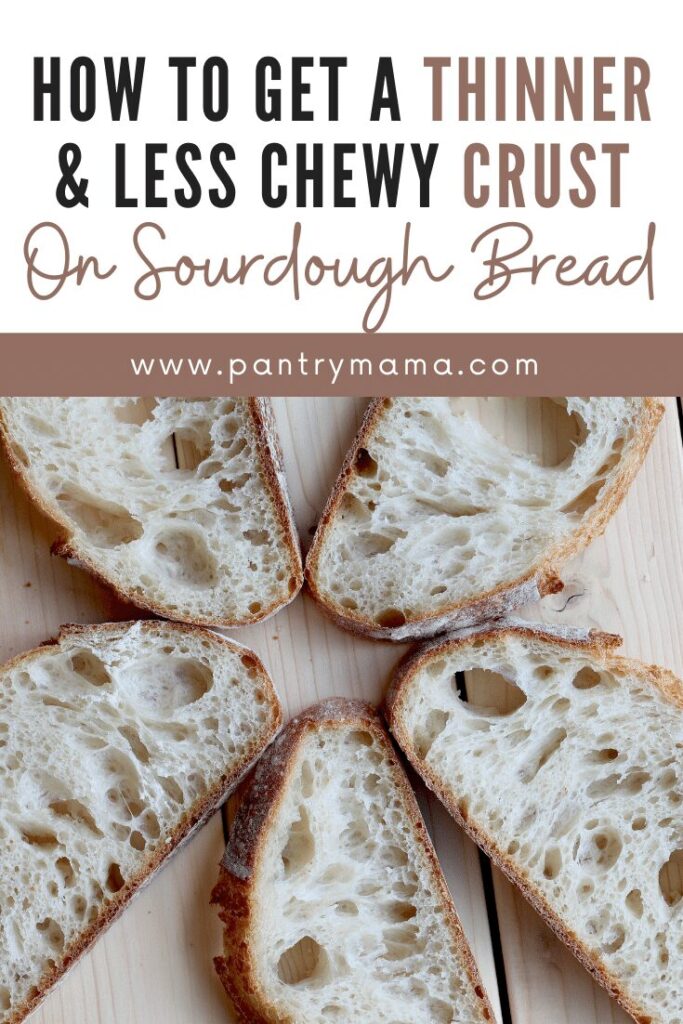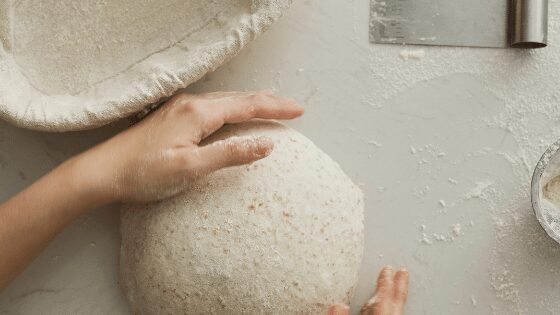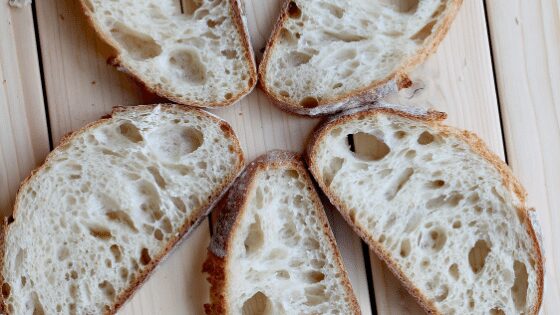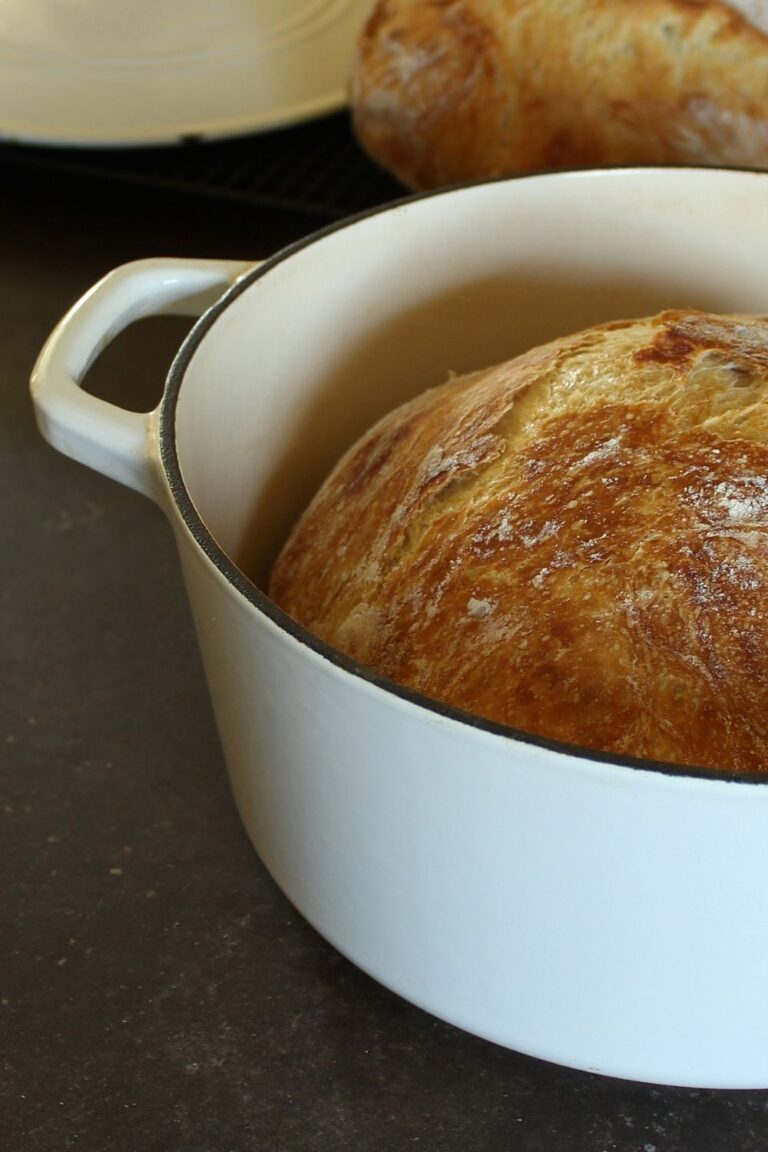How to Get A Thinner Crust on Sourdough Bread And Make It Softer & Less Chewy
This post may contain affiliate links.
How to get a thinner crust on sourdough bread - it's easier than you might think!
While many people love the crunchy, chewy texture of sourdough crust, there are many people out there who enjoy a softer, thinner or more delicate crust, especially if you like to toast your sourdough bread.

You don't have to make a certain recipe to change the texture of your crust.
You can make a few adjustments to the amount of ingredients you use, as well as the method which you cook to achieve a thinner sourdough crust.
You could choose to adopt all or just one or two of these ideas.
One of the best things to do with sourdough is to experiment - but it's always good to change one thing at a time so you can know for sure what has had a positive effect on your bake.
My husband really dislikes it when I make the type of sourdough bread I enjoy - a crispy yet chewy crust.
So I've had to become proficient in making bread to suit his tastes ... as well as mine!
How To Get A Thinner Crust On Sourdough Bread
Here are the best ways to ensure you get a thinner softer crust on your sourdough bread.
Adding Olive Oil or Other Fats
Adding fats or oils to your bread can help to soften the crust.
Sometimes it can be trial and error as to how you like your bread, but some things to try are (all based on my 500g flour loaf):
- 20g of olive oil
- 30g of melted butter
- 30g of melted peanut butter
You can add the fats after the autolyse stage of your sourdough process.
Fats and oils will also encourage a deeper, darker sourdough crust.
You'll find a full guide to adding olive oil to sourdough here.
Use A Dutch Oven
Dutch Ovens are definitely worth the investment for making sourdough bread.
They are the easiest way to recreate a professional baker's oven in your own home.
A Dutch Oven traps the steam and holds it close to your bread, ensuring that it can rise and expand before the crust forms.
Ensuring that your Dutch Oven is nice and HOT before you add your dough will give it the best chance to develop a lovely thin crust.
The steam inside the pot helps to ensure that you don't have a tough crust.
Place a cookie sheet on the rack below your Dutch Oven to ensure that you don't get a burned bread base. This also contributes to a tough, chewy crust.
You could also extend the "lid on" time of your sourdough bake, just reduce the temperature as if you were taking the lid off.
Increasing the Hydration
Higher hydration doughs generally have a thinner, crispier crust.
This is because there is more water in the dough, so when it hits the oven, there is more steam - allowing your bread to expand more easily before the crust starts to form.
Knowing this, you could try to increase the amount of hydration in your dough. My simple sourdough recipe is around 71% hydration. If you do want to try a high hydration recipe, you can try this higher hydration sourdough recipe which is 80% hydration.
If you want to push this to 75% you would need to increase the water content to 370g.
You can read more about higher hydration dough here and more about Baker's Math here.
If you aren't quite ready to try a higher hydration dough, you can also try to increase the amount of steam inside your Dutch Oven.
Spraying your dough liberally with a water atomiser helps to thin out your crust.
It can also help you to get a beautiful blistered sourdough crust!
Avoid Using Too Much Flour On Your Dough Surface
Excess flour can cause a thick, tough crust. If you are using rice flour in particular, this can cause a tougher crust to form.
Try to minimise the amount of rice flour you use and brush off the excess before baking.
If you are rubbing your dough with flour before baking to accentuate your scored designs, this too can dehydrate your crust, causing it to be tougher and more chewy.
Try just spraying with water before baking or minimising the amount of flour you're using on the surface of your bread.
Sweating Your Crust
When your bread comes out of the Dutch Oven, wrap it immediately in a clean, cotton tea towel and allow it to "sweat" as it cools.
The moisture that is escaping from your bread as it cools will be trapped inside the tea towel and sit on the dough's surface keeping the crust softer than if you allowed it to cool in the open air.
Make Sandwich Bread Instead
If you really dislike the crust on your sourdough bread and you aren't having luck in changing it, why not try to make a sandwich loaf instead.
Made with sourdough, it will still have a delicious flavor and all the benefits of sourdough, just with a softer crust.
Here's an easy sourdough sandwich bread recipe that's sure to please - it's amazing for sandwiches, tastes great toasted and freezes brilliantly!






